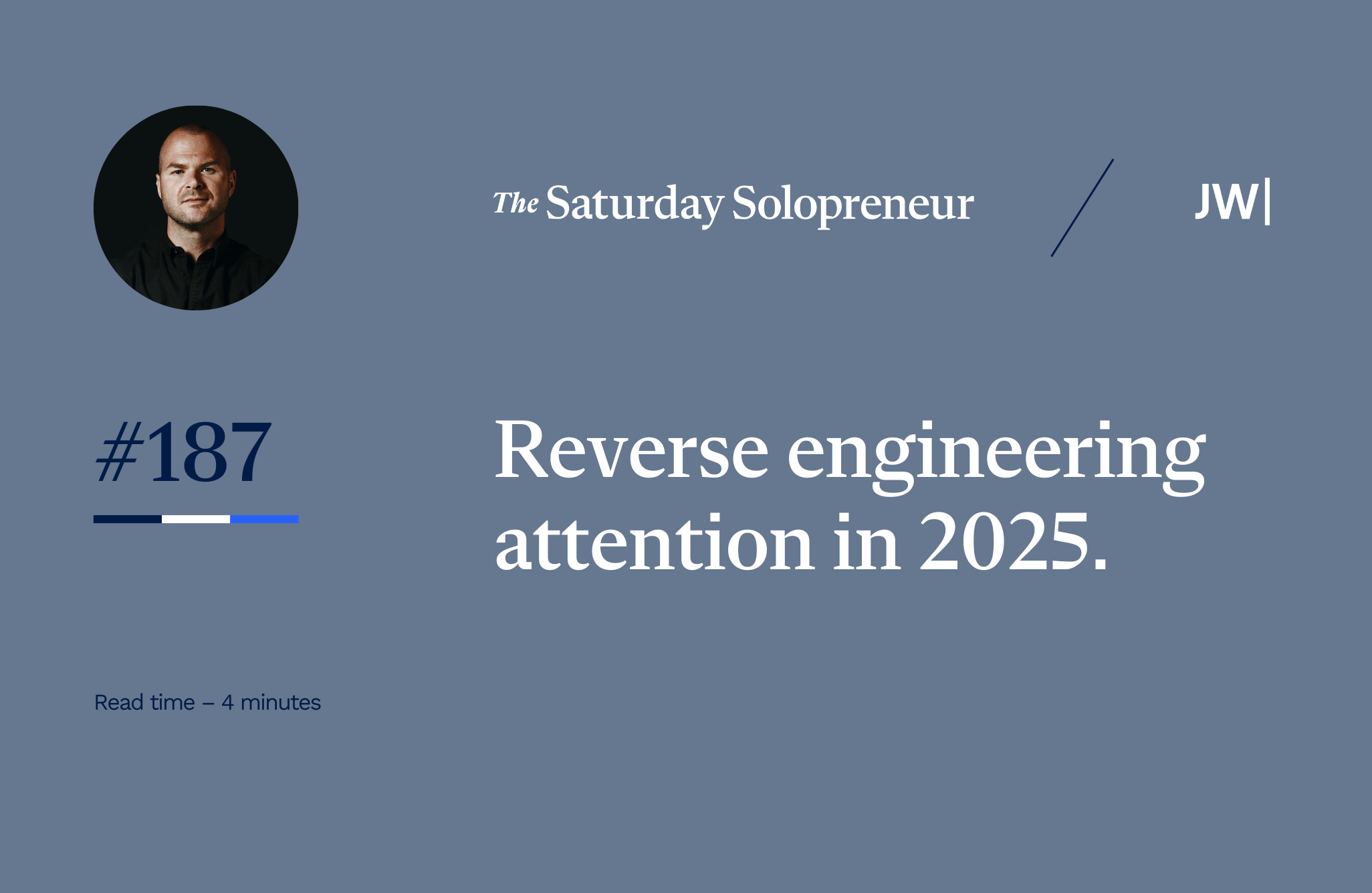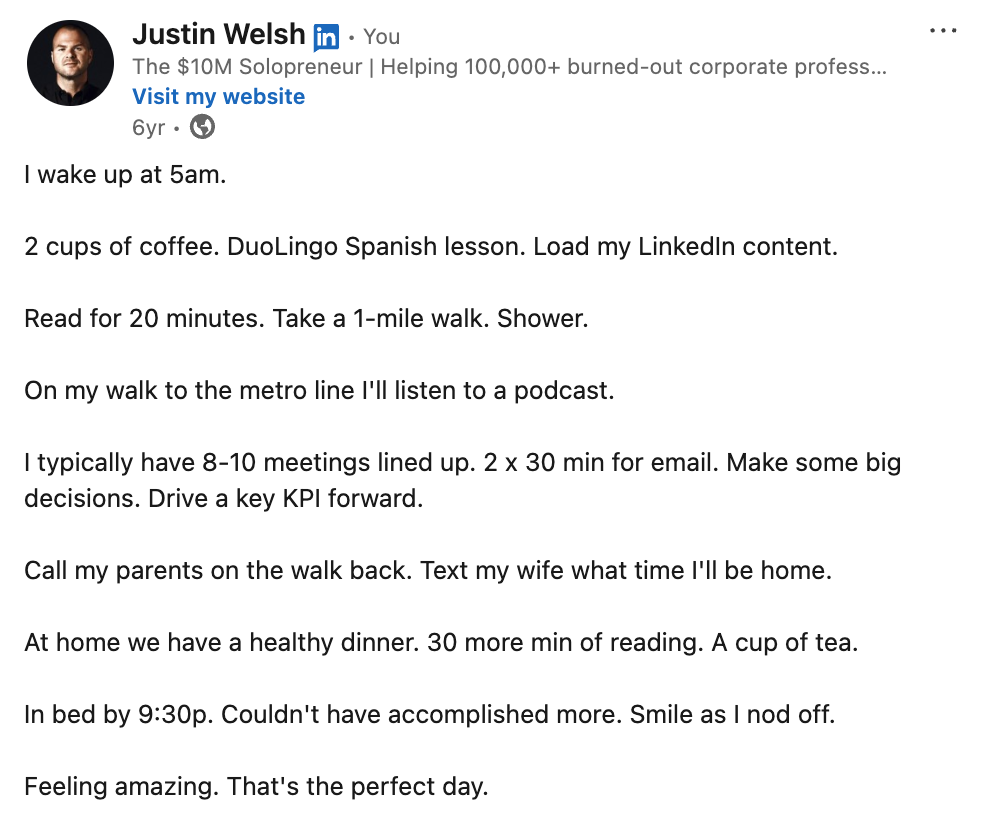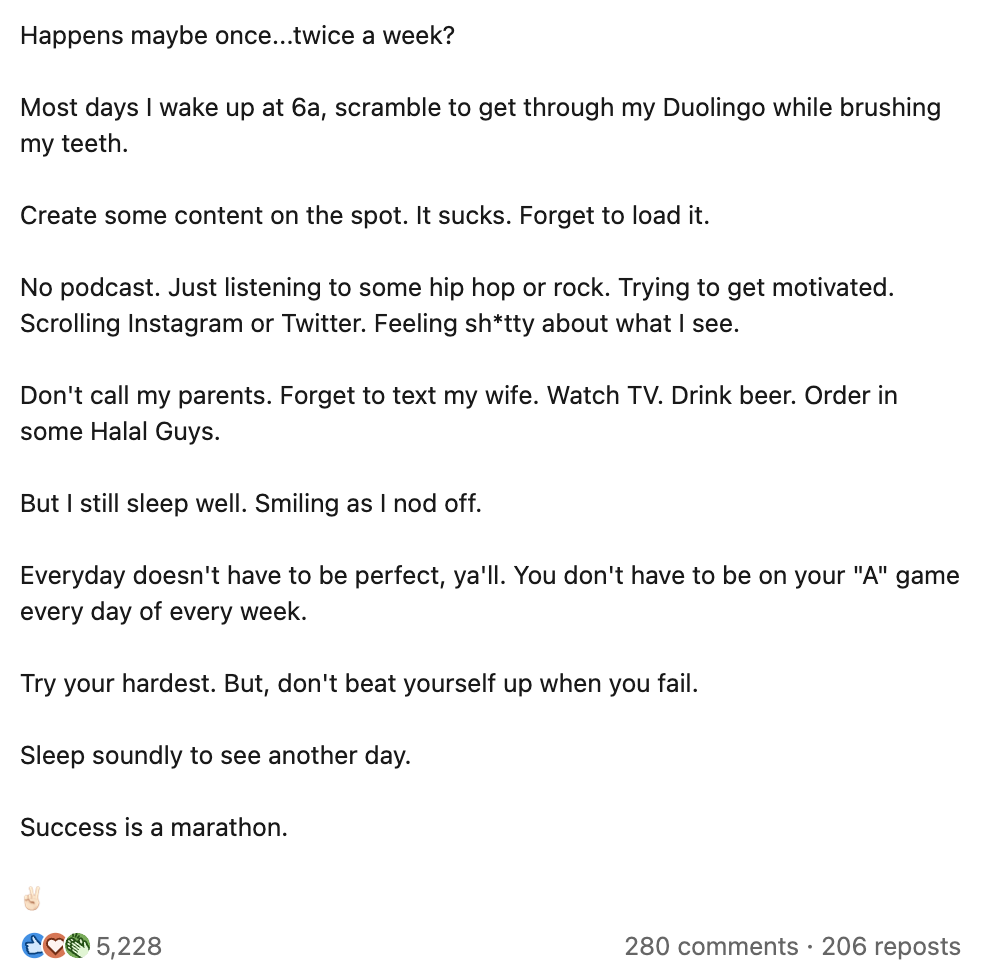
Reverse engineering attention in 2025.
How Does A $10M Education Business ACTUALLY Work?
Want to see behind the scenes of a $10M online course business? Olly Richards has written a 118-page case study about how he did it.
doola is your business in a box
doola helps entrepreneurs around the world form their LLC, manage their books, and file taxes— in one place. No stress. No second-guessing.
When I first started writing online, I thought getting attention was just about great "hooks."
Then I moved on to "providing value" and "being consistent." And let's not forget authenticity.
But after all these years, I’ve started leaning into a new formula for attention. And I started down this new road after rereading a post of mine from 2019. It taught me about what really captures attention in our scroll-heavy world.
The truth is that people have trained their brains to ignore almost everything at this point. Scroll, skim, and forget is how people are consuming. When you see 10,000+ posts a day, your brain develops an automatic filter that blocks out a lot of what you ingest.
And because of this, most creators are fighting their most difficult battle for attention.
The day everything changed
Back in 2019, I wrote a piece of content that started like this:

Readers stopped reading there, got furious, and started letting the comments fly.
"Another bro-ey morning routine!"
"Another productivity hack!"
"Another guy trying to make me feel lazy!"
But I knew something they didn't. The post flips completely in the second half.

If a reader got to the end of the piece, their reaction was different. They'd leave a reaction, drop a nice comment, and 206 people shared it with their friends. They went from hate-reading to hitting save and repost.
That post taught me something crucial: attention isn't one thing. It's three different things working together. And if you miss any of them, you're just more noise in someone's feed.
The three-part game nobody explains
Here's what I've learned writing 4,000+ pieces of unique content over the past 6 years.
First, you need pattern disruption…something that makes a person's brain stutter. The first few lines of that piece of content worked because it triggered an immediate emotional response. People thought for sure that it was a hustle and grind post, and they leaned in angrily, ready to chew me out.
But pattern disruption alone isn't enough. You also need what I’ll call the "relevance snap." That's the moment when someone thinks, "Wait…this is about me." It's when your content shifts from being about a general topic to being about the reader's specific experience. Not just hustling entrepreneurs. Not just creators trying to make it happen. This is for "anyone who's ever felt like they're falling short of their own impossible standards." That's most people. And people can absolutely feel that in their soul.
And finally, emotional accuracy. This is where most creators fail. They write to sound smart when they should write to make people feel seen. There's a massive difference between:
"Studies show that 87% of professionals struggle with maintaining consistent morning routines."
And:
"Most days I wake up at 6 a.m., scramble to get through my Duolingo while brushing my teeth."
The first one is data-driven, generic, and really boring. As soon as I see a lot of stats, I start yawning. Sure, they might be true, but it doesn't make anyone feel anything emotionally. It's the kind of line that makes people nod and keep scrolling for something else.
The second one? That's the sound of someone's actual morning. The rushed, totally imperfect reality that makes readers think "holy shit, that's literally me right now." It's very specific, vulnerable, and most importantly, it's what emotional accuracy actually looks like to people.
The bad example tries to prove a point, while the good example shares a real moment. And that's what makes people stop scrolling and start connecting.
Miss any of these three things, and people scroll on by. Nail all three, and they can't help but pay attention.
The clickbait myth that's holding you back
Something isn't clickbait if you deliver.
And it's especially not clickbait if you take your audience on a journey where they discover something extremely useful.
This freed me up to write content that felt "wrong" or even highly polarizing. To start with pattern disruption. Because I knew that if I could get someone to pause, I could deliver something worth their time.
The key is understanding that each part serves a purpose:
- The opening breaks their mental pattern
- The body makes them see themselves in your words
- The payoff gives them something they'll remember (and save)
A lot of creators get one part right. They'll write great hooks, but the content lacks the emotional appeal people are looking for.
Or they write helpful content, but their writing is so boring, nobody ever stops to read it.
Or they nail the emotional stuff but forget to make the content useful enough for people to apply it or share it with their friends.
The good stuff happens when you start mixing all three together successfully.
What this actually looks like
I see creators posting into the void, wondering why their best ideas get ignored while someone's random thought about coffee gets 10,000 likes.
The difference isn't the idea. It's how the idea is executed.
That coffee post probably started with something unexpected ("I haven't had coffee in 97 days"). It probably got specific in a way that felt personal ("that 2:30 PM meeting where everyone else is caffeinated and you're running on willpower"). And it probably named an emotion others felt but couldn't articulate ("the weird pride of being the only person who doesn't need stimulants to function").
Pattern break. Relevance snap. Emotional accuracy.
Once you see this pattern, you'll have a hard time unseeing it. Every piece of content that stops you in your tracks is doing all three. Every piece you scroll past is missing at least one.
The bottom line
For years, I chased individual tactics. Better hooks. Stronger CTAs. More consistency. More value.
But attention in 2025 isn't about just one of these. It's about engineering the complete experience. It starts with the moment someone's brain stutters on your opening to the moment they engage because you've shown them something about themselves, to them sharing the post because it's super useful.
You're not really competing with other specific creators anymore. You're competing with the scroll-skim-forget reflex that everyone's developed. And the only way to win is to understand how attention actually works, not how we wish it worked.
Because once you understand the real game, everything changes.
Your content (and your impact) will never be the same.
That's all for today.
See you next Saturday.
P.S. Want to dive deeper? If you found this lesson useful, there are 20+ more like this inside The LinkedIn Operating System. Come join 40,000+ students who have rated it 4.98 out of 5 stars.
.png)
Join 10K+ online entrepreneurs in my business Masterclass:
The Creator MBA Masterclass is my complete business playbook. Every framework and system I used to grow my following to 1.5M and my business to $12M in revenue at 90% margins. Learn how to finally monetize your expertise!
